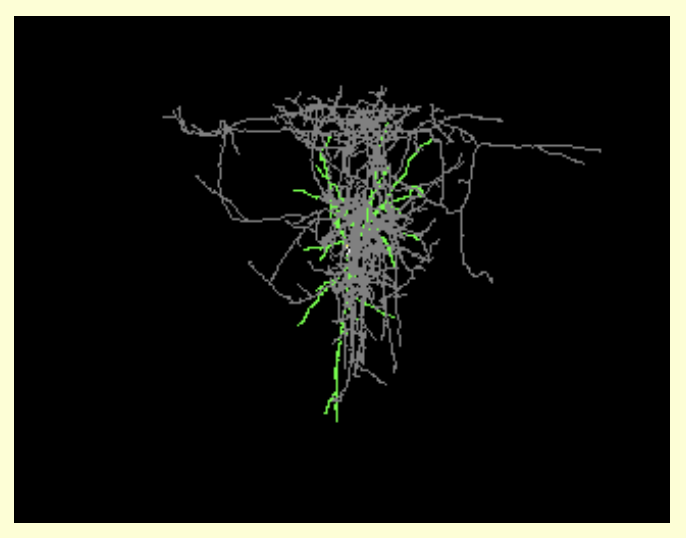Consortium for Radiologic Imaging Studies of Polycystic Kidney Disease (RRID:SCR_000690)Copy Citation Copied
URL: http://archives.niddk.nih.gov/patient/crisp/rp-crisp.aspx
Proper Citation: Consortium for Radiologic Imaging Studies of Polycystic Kidney Disease (RRID:SCR_000690)
Description: A five-year prospective cohort study following 240 patients who have autosomal-dominant polycystic kidney disease (PKD) to determine whether changes in anatomic characteristics of their kidneys as measured by magnetic resonance imaging will be useful in providing surrogate measures for disease progression. CRISP's overall goal is to develop methods that would facilitate shortening the observation period necessary to determine efficacy of treatment interventions in PKD patients. Specific goals of this study are to: * Quantify cyst growth and ascertain severity of renal parenchymal involvement by sequential measurement of total kidney volume and the ratio of intact parenchyma to renal parenchyma occupied by cysts over time * Establish useful clinical correlations of imaging data with other markers of disease progression * Identify and test other potential markers or indices of disease progression, for example, assessment of loss of heterozygosity of renal cells shed in the urine, or other markers, in cohorts of patients with PKD * Gain information about the cost-effectiveness, patient acceptability, and advantages and disadvantages of different imaging techniques used serially in patients with PKD. Some experience has been gained in establishing that repeat imaging of the same PKD patient, using these techniques, yields reproducible estimates of kidney size and the proportion of renal parenchyma occupied by cysts. MRI may also have the advantage of permitting simultaneous estimation of GFR. Ultrasound has the advantage of being more cost-effective and perhaps more acceptable to patients for repetitive studies, but the measurements may be less accurate and reproducible. Nonetheless, there is very limited experience in applying these techniques to follow progression of the renal disease. Development of improved, reproducible imaging methods that assess cyst growth and provide markers of disease progression could markedly improve the feasibility of clinical trials. Participating clinical centers are Emory University, the Mayo Clinic, University of Kansas, and the University of Alabama at Birmingham. The data coordinating and imaging analysis center is at Washington University. (PI has since moved to University of Pittsburgh) The study found that kidney enlargement resulting from the expansion of cysts is continuous, quantifiable, and associated with the decline of renal function. Cystic expansion occurs at a consistent rate per individual, although it is heterogeneous in the population, and that larger kidneys are associated with more rapid decrease in renal function. These anatomic characteristics of patient kidneys may provide useful surrogate measures for disease progression, and hence enhance the development of targeted therapies for autosomal dominant PKD. CRISP III is a five-year prospective cohort study to follow ~170 remaining autosomal dominant polycystic kidney disease (ADPKD) patients who were part of the original CRISP cohort study. CRISP III will verify and extend the preliminary observations of CRISP to determine the extent to which quantitative (kidney volume and blood flow, and hepatic and kidney cyst volume) or qualitative (cyst distribution and character) structural parameters predict renal insufficiency and develop and test new metrics to quantify and monitor disease progression. Urine metabolites and the genome will be correlated with the progression of disease to look for new, predictive disease biomarkers. This information from CRISP III will help determine if the kidney enlargement, blood flow, cyst distribution, or urine metabolites can function as an informative surrogate measure for disease progression.
Abbreviations: CRISP
Synonyms: Consortium of Radiologic Imaging Study of PKD
Resource Type: resource, clinical trial
Keywords: mri, kidney volume, cyst volume, kidney, renal function, disease progression, measure, blood flow, hepatic cyst volume, kidney cyst volume, renal insufficiency, urine metabolite, surrogate measure, clinical, intervention
Expand Allis listed by |
|
has parent organization |
We found {{ ctrl2.mentions.total_count }} mentions in open access literature.
We have not found any literature mentions for this resource.
We are searching literature mentions for this resource.
Most recent articles:
{{ mention._source.dc.creators[0].familyName }} {{ mention._source.dc.creators[0].initials }}, et al. ({{ mention._source.dc.publicationYear }}) {{ mention._source.dc.title }} {{ mention._source.dc.publishers[0].name }}, {{ mention._source.dc.publishers[0].volume }}({{ mention._source.dc.publishers[0].issue }}), {{ mention._source.dc.publishers[0].pagination }}. (PMID:{{ mention._id.replace('PMID:', '') }})
A list of researchers who have used the resource and an author search tool
Find mentions based on location

{{ ctrl2.mentions.errors.location }}
A list of researchers who have used the resource and an author search tool. This is available for resources that have literature mentions.
No rating or validation information has been found for Consortium for Radiologic Imaging Studies of Polycystic Kidney Disease .
No alerts have been found for Consortium for Radiologic Imaging Studies of Polycystic Kidney Disease .
Source: SciCrunch Registry





